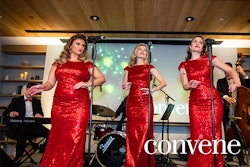
When the pandemic emerged in early 2020, organizations of all kinds had to pivot quickly to a video-based operations model—in some cases due to restrictions on in-person gatherings; in others to provide at-risk employees, students, and customers with remote-attendance options.
But this was less of a sea change than a rapid acceleration of pre-existing trends: the movement toward remote work and the increasing centrality of video communication in enterprise environments.
Today, the corporate workday has become, in essence, a hybrid event. Team meetings are similar to breakout rooms at a conference. Town hall events led by C-level leaders are like keynote presentations. Lots of key information is contained in the video files, notes, and presentations from large-group meetings.
As many of us can see in the course of our daily work lives, this type of work environment can be challenging to manage. Colleagues are often connecting from a wide variety of locations—be it their bedroom, home office, coffee shop, or even from their car. During these interactions they might need to:
- Present visual materials, like PowerPoint presentations
- Share video content
- Facilitate both large and small group discussions
Without the right video infrastructure and support, these interactions can be clunky, disjointed, and less than engaging.
And because so much content and material are being shared and even stored via videoconferencing platforms, it's critical to have an organized system in place for recording, storing, and providing access to these meetings after the fact.
In other words, many businesses and organizations are facing the same challenges as hybrid event planners: coordinating live feedback and breakout rooms, organizing slide decks and other assets for deployment during video presentations, and providing easy, reliable access to both live and on-demand content.
Bringing Event Management Tools to the Conference Room and Beyond
Improved technology and ongoing trends in the labor market indicate that the corporate workday is likely to remain a hybrid event for the foreseeable future, if not forever.
That means the ability to make video-based communication and collaboration as efficient, effective, and engaging as possible will continue to be imperative for the day-to-day operations of most organizations. Accordingly, HR directors, COOs, and other managers may want to take a cue from event organizers and consider engaging an external partner to help manage their video strategy and infrastructure.
An experienced video services team can ensure your capture and recording systems are optimized, your content management system is easy to navigate, and your most valuable video content is ready for deployment at a moment's notice.
This will save your team time, effort, and frustration—and it will ensure that your organization is positioned to leverage the opportunities and minimize the risks associated with the work environment of the future.
To learn how the Video Solutions team is helping organizations transform their video strategy and infrastructure for tomorrow's enterprise environment, visit www.videosolutions.pro.



















